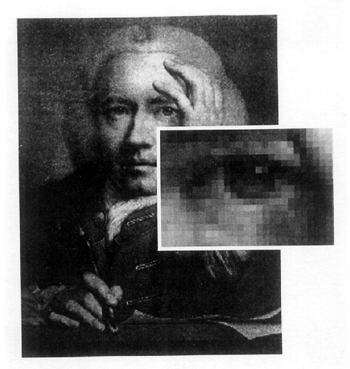DIGITAL VIDEO MICROSCOPY: A PRACTICAL VISUAL ANALYSIS TECHNIQUE FOR THE CONSERVATORTED STANLEY
2 2. DIGITAL VIDEO MICROSCOPYMicroscopic side-by-side comparison study is a standard analytical method that has been used in forensic science for a long time. The system allows one to make critical visual comparisons of two specimens simultaneously in real-time with the same optical magnification. The method uses a comparison microscope, which is really two compound light microscopes connected by an optical bridge. An observation tube with eyepieces is in the center of the optical bridge, creating a split view of two simultaneously observed specimens. In forensic science it is critical to look for both points of identity as well as differences when performing side-by-side comparisons (Robertson 1992). The same approach is necessary when performing visual comparisons of materials in conservation. However, comparison microscopes are very expensive, so very few conservation laboratories have been able to afford them. But, at a fraction of the cost of a comparison microscope, a video capture card may be used with an existing video microscope system to quickly and inexpensively achieve side-by-side comparison capabilities close to those of a comparison microscope. The system can display on the computer monitor one or more captured images generated from the computer's data file and a real-time image from the microscope. Thus, several people may view the computer monitor at once instead of having to take turns looking into the microscope, then having to turn to look at a sample displayed elsewhere. The system is also excellent for teaching students or interns and for consulting with curatorial staff members. Imaging software such as Adobe Photoshop can enhance the quality of digital images well enough to make comparison sampling very worthwhile. However, it should be mentioned that even with a high-resolution monitor and superior software, the image quality will not be quite as sharp as looking directly into the microscope eyepieces. 2.1 2.1 VIDEO CAPTURE CARDThe key component in the system is the video capture card, an expansion card that plugs into the peripheral component interconnect (PCI) slot of the computer. It converts the analog output signals of the video camera into digital input signals for the computer to process and display. Analog technology can be described as capturing real images that are made of intensity values and positions that are continuous functions in space and time (Luther 1991). A digital image is obtained from the analog signal by a series of discrete and complex processes, which include sampling and quantization (Kabir 1996). The image is a matrix of tiny elements or squares called pixels (fig. 1). Each pixel represents a value that is a function of the information surrounding the corresponding point in the image (Poynton 1996).
A Y/C or S-video cord connects a video camera attached to the microscope via a camera mount to the video capture card by a line input on the card. The cord helps to provide high resolution by keeping separate the luminance signal (contrast) from the chrominance signal (color). The process uses more horizontal scanning lines than in standard video, which results in higher resolution. The video capture card software has controls for adjusting such features as brightness, color, sharpness, and contrast. The software is used in tandem with the latest version of Apple's QuickTime, a software architecture for creating and viewing digital media for Apple and Windows platforms (Greenberg and Greenberg 1995). The more sophisticated cards have additional video-editing software packages that include applications such as Adobe Premiere, and they cost more. Video capture cards record real-time movies running up to 30 frames per second. Also, a single frame can be frozen or captured in the process. Images can be recorded at various resolutions. Resolution indicates the number of horizontal pixels by the number of vertical pixels, for example, 640 � 480. Images are displayed using standard signal formats such as those of the National Television Standards Committee (NTSC) and Phase Alternate Line (PAL), which is an international standard in Europe and other places. |
